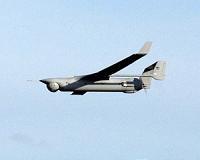 |
Woburn MA (SPX) Aug 06, 2010 In less than a decade, unmanned aerial vehicles (UAVs) have evolved from a curiosity on the battlefield to a core 'eyes in the sky' resource for the US military. Yet, as more UAVs enter the battlespace for new and novel uses, these unmanned systems will need to operate more intelligently and autonomously, evading enemy hazards and adapting to the changing mission conditions with reduced human intervention. To meet the challenge of how human knowledge can be transferred to machine systems, Aptima and the Cognitive Engineering Research Institute are developing MIMIC, the "Mixed Initiative Machine for Instructed Computing," a capability for capturing and conveying to UAVs the flight control and decision-making expertise lodged in the heads of humans. MIMIC is being developed through a contract with the Office of Naval Research (ONR), to help ONR to create a next generation of intelligent UAVs that can operate more autonomously, allowing the UAV for example, to infer mission threats and more quickly avoid adversary actions, to self-launch or land, and to make necessary flight control decisions when communications are disrupted, or the human operator's attention is divided amongst several UAVs.
MIMIC in Action As a multi-UAV simulator, DDD employs a unique user interface that logs and tracks every interaction of the human UAV operator as they're engaged in a mission involving, multiple UAVs, numerous target objectives and a myriad of constraints such as weather, hazards, fuel, speed, and other aircraft. Using software-based agents, MIMIC will build a mental model of the human operator as they perform mission tasks, observing and learning the flight control behaviors and tactical decision-making. "The goal of automation is for the system to become aware of the user's intentions and objectives, such that it has learned the 'play,' knows how to execute it, and can facilitate or assist what needs to happen next," said Nathan Schurr, MIMIC Program Manager at Aptima. Rather than the tedious step-by-step process of a human attempting to train a UAV system, MIMIC's agent-based technology learns from a user's actual behaviors, from which it can then anticipate and predict when to automate a sequence of actions or processes. "Considering that it currently takes a team of people to control a single UAV, the development of intelligent interfaces will flip that model, elevating the human to a level where an individual can operate and manage multiple unmanned vehicles," Dr. Schurr added. Aptima, which applies expertise in how humans think, learn, and behave to solving complex military problems was awarded MIMIC through the Department of Defense Small Business Technology Transfer Program (STTR), which provides early-stage R and D funding directly to small companies working cooperatively with researchers at universities and other research institutions.
Share This Article With Planet Earth
Related Links Aptima UAV News - Suppliers and Technology
 Insitu Awarded STUAS/Tier II Contract
Insitu Awarded STUAS/Tier II ContractBingen WA (SPX) Aug 04, 2010 Insitu Inc. has announced it has been awarded the Small Tactical Unmanned Air System (STUAS)/Tier II contract from Naval Air Systems Command (NAVAIR) for its Integrator unmanned aircraft system (UAS). In partnership with The Boeing Company, Harris Corporation, Corsair Engineering and Black Ram Engineering Services, Insitu will begin the 24-month engineering, manufacturing and development p ... read more |
|
| The content herein, unless otherwise known to be public domain, are Copyright 1995-2010 - SpaceDaily. AFP and UPI Wire Stories are copyright Agence France-Presse and United Press International. ESA Portal Reports are copyright European Space Agency. All NASA sourced material is public domain. Additional copyrights may apply in whole or part to other bona fide parties. Advertising does not imply endorsement,agreement or approval of any opinions, statements or information provided by SpaceDaily on any Web page published or hosted by SpaceDaily. Privacy Statement |